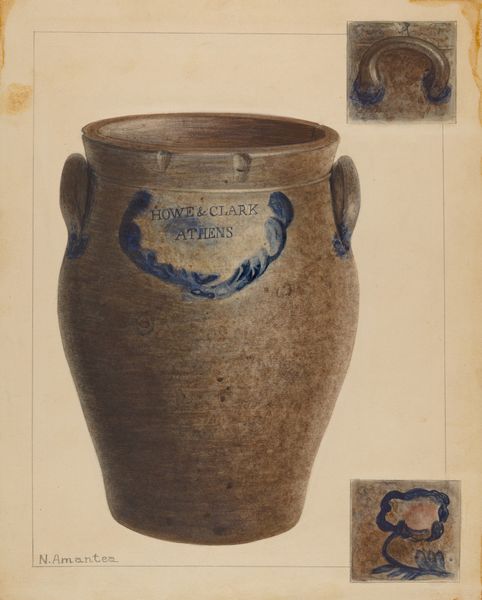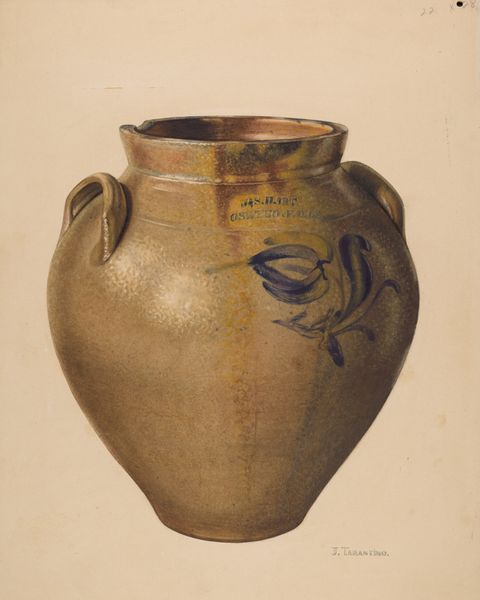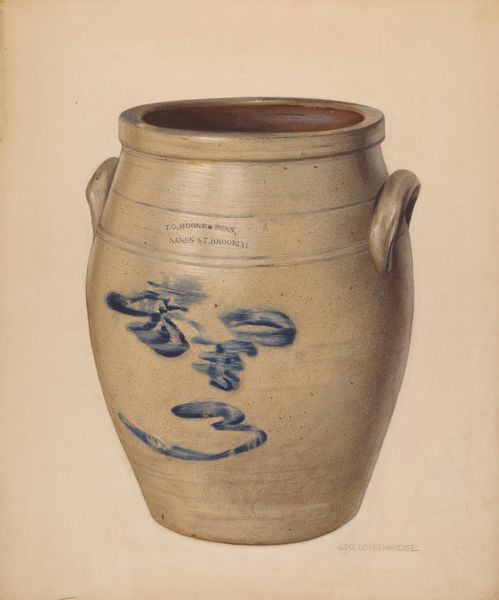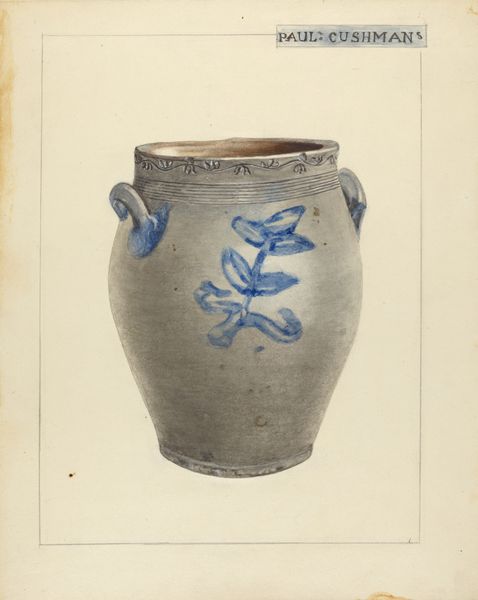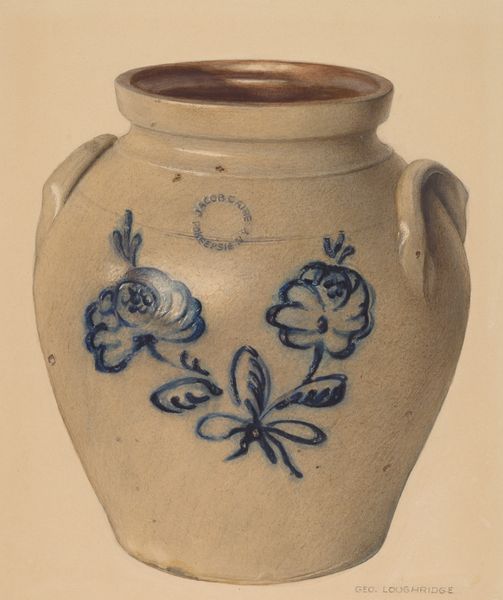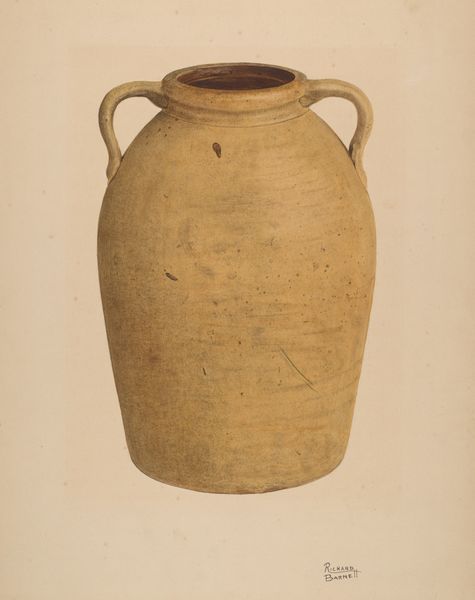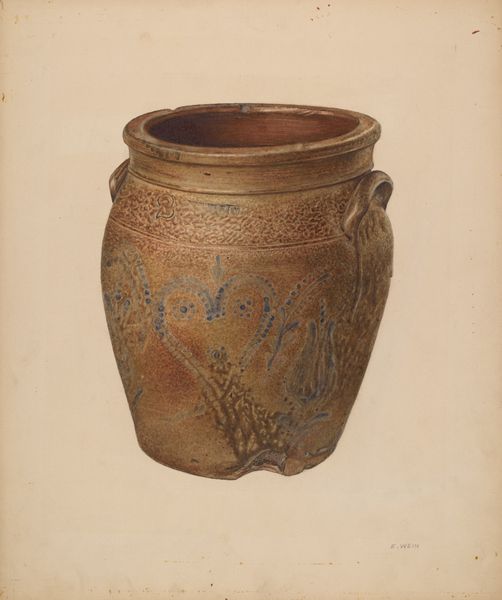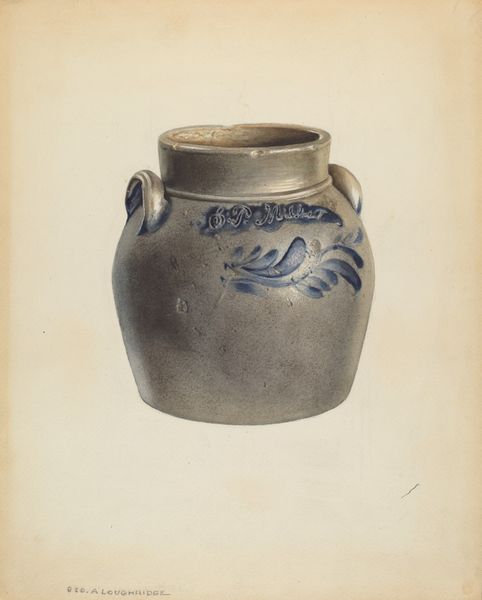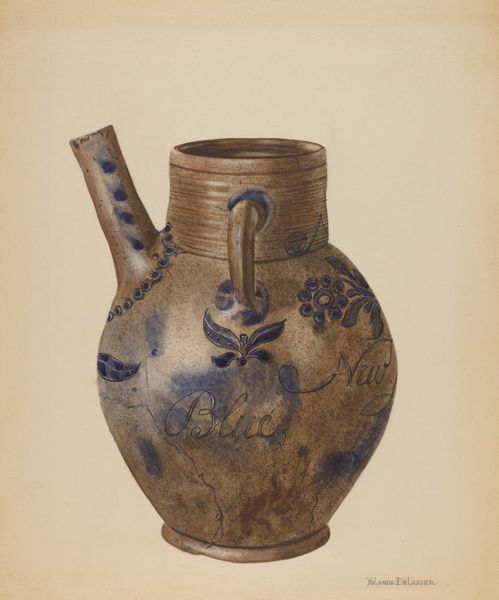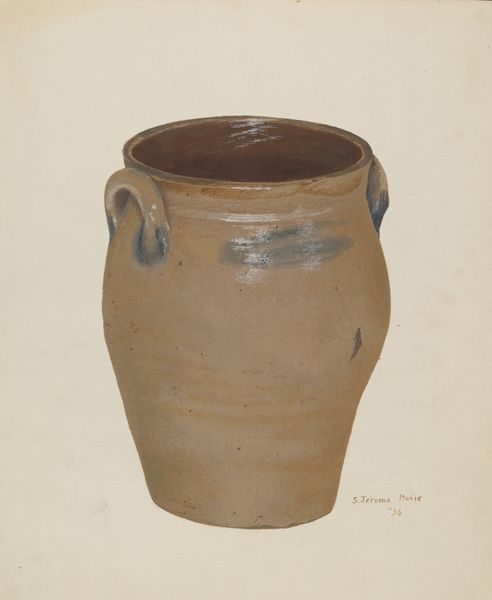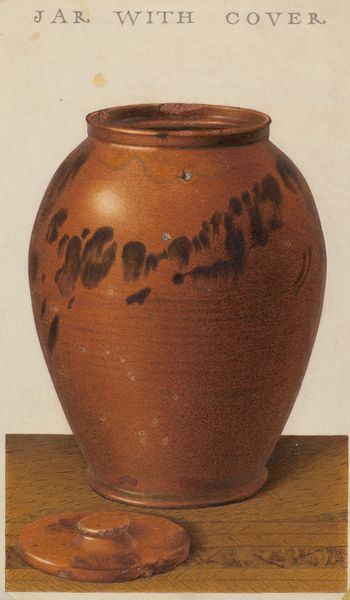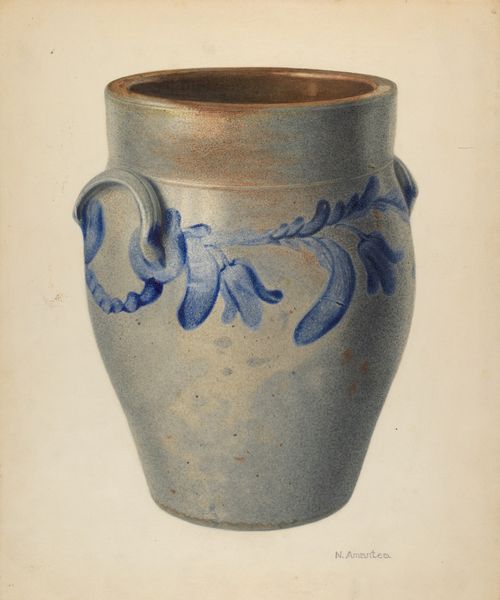
drawing, ceramic, watercolor, earthenware
#
drawing
#
ceramic
#
watercolor
#
earthenware
#
ceramic
#
earthenware
Dimensions: overall: 27.8 x 22.8 cm (10 15/16 x 9 in.) Original IAD Object: 11 3/4" High 10 1/2" Dia.(center) 6 1/2" Dia.(bottom)
Copyright: National Gallery of Art: CC0 1.0
Editor: So this is Jerome Hoxie’s “Butter Crock,” made in 1936. It combines drawing, watercolor, and ceramic earthenware. I find it interesting that the rendering gives an antique look, as if the watercolor and drawing tried to emulate the real pottery in a loving, vintage way. What catches your eye about it? Curator: Immediately, I see a convergence of production methods. The traditional craft of earthenware pottery, a common, almost quotidian object, is rendered through drawing and watercolor, techniques historically associated with "high art." Hoxie collapses that binary. We're prompted to consider not just the object depicted, but also the labor involved in its creation at every stage – from potting to drawing to firing, and even painting. Editor: That’s an interesting point about the different kinds of labor! It is, after all, a representation. Do you think there is any connection with the date inscribed on it? Curator: Exactly! The inscribed date of 1842 speaks to the pot's own history and material transformation. It might be tempting to read the date of the butter crock in the watercolor as the pot's making but I encourage looking closely at its cultural and political context to grasp this tension and relation with materiality and history. What would butter and preservation represent at this time? Editor: Hmm, now that you mention the production and making of butter, it almost evokes a simpler time… Before industrial production. It almost feels like a nostalgia towards the handmade in a way, in contrast to the fast-paced mechanization of 1936. Curator: Precisely. Hoxie urges us to consider the relationship between handcraft, industrial processes, consumption, and artistic representation. How often do we think about labor embedded within the object? Editor: I guess not as much as I should! It makes me appreciate the value imbued in craft itself and how the different stages and hands shape both the object and its cultural perception. Curator: Exactly. By foregrounding both the depiction and its materials, we question hierarchies of artistic value.
Comments
No comments
Be the first to comment and join the conversation on the ultimate creative platform.
